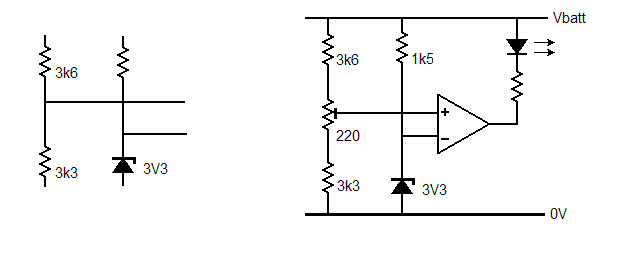Syncopator
Full Member level 6
- Joined
- Dec 15, 2010
- Messages
- 367
- Helped
- 70
- Reputation
- 140
- Reaction score
- 66
- Trophy points
- 1,308
- Location
- N.E. Lincolnshire U.K.
- Activity points
- 3,395
In an earlier post you said that you are using a 6V battery as the op-amp's supply. The supply has to be a higher than the maximum voltage you want to monitor.
To monitor for 6.9V, you need a supply which is a couple of volts higher than that, say 9.
Can you confirm that you can do that?
To monitor for 6.9V, you need a supply which is a couple of volts higher than that, say 9.
Can you confirm that you can do that?

